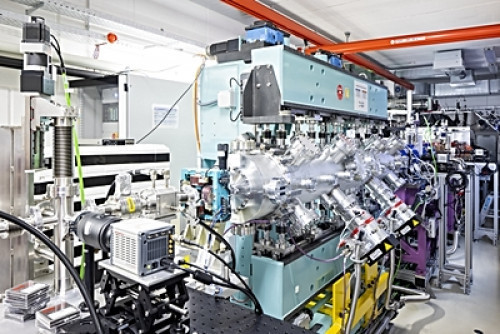Free-electron lasers (FELs) generate extremely intense light pulses. Particularly in the X-ray range, this allows a wide variety of materials to be analyzed in detail and ultra-fast processes to be followed with the utmost precision. Until now, the systems have been based on conventional electron accelerators, which makes them long (from several hundred meters to several kilometers) and expensive.
 The free-electron laser (FEL) of the French research partners converts the electron pulses generated by the DRACO high-power laser at the HZDR into flashes of light. In the foreground the beam tube framed by a light blue magnet arrangement - the undulator - in the background the metallic beam chamber for the DRACO laser (Image: HZDR/Sylvio Dittrich)
The free-electron laser (FEL) of the French research partners converts the electron pulses generated by the DRACO high-power laser at the HZDR into flashes of light. In the foreground the beam tube framed by a light blue magnet arrangement - the undulator - in the background the metallic beam chamber for the DRACO laser (Image: HZDR/Sylvio Dittrich)
An international team at the Helmholtz-Zentrum Dresden-Rossendorf (HZDR) has now achieved a breakthrough on the way to a cheaper version: it has been able to realize an FEL with a still young technology - laser plasma acceleration. In the future, significantly more compact systems appear to be possible, which would considerably expand the possible applications of FELs. In principle, an accelerator that is currently a hundred meters long could shrink to a length of less than one meter.


